Introduction.
The purpose of my research is to prove that the Fender Stratocaster is the best all-round mass produced electric guitar ever made. I will be comparing the Fender Stratocaster to the Gibson Les Paul guitar. I consider the Les Paul to be the best challenger when it comes to a direct comparison between what is in my opinion the two leading mass produced guitars of our time, I will be looking at various models from both the Fender and Gibson range of Stratocasters and Les Pauls.
I will aim to demonstrate the two guitars history, construction and the materials used. I will also look at some of the musicians that got the two guitars to be so well known and why they chose to play them.
I will aim to Show the development of both the Stratocaster and the Les Paul and to look at how the guitars have changed since the early days of their manufacture. For my research I have used the Internet to get information directly from both Fender and Gibson from their websites and to get interviews from people like Abigail Ybarra and Seymour Duncan and others involved in the construction of the guitars and a video of the factory and the construction methods as they are today. I have also been using books on the Stratocaster and Les Paul by Tony Bacon. I will also briefly be looking at explaining the Epiphone and Squire guitar ranges that later helped to make these guitars available to the masses with their lower end entry models. Epiphone is owned by Gibson and the Squire range is owned by Fender.
The Fender Stratocaster.

When Leo Fender’s company introduced the Stratocaster model in 1954 it changed popular music forever. The Stratocaster has been played by the likes of Jimi Hendrix, Buddy Holly, Jeff Beck to name but a few. I believe the versatility and sheer playability of the instrument is the main reason it continues to be a major player in the world of guitars to this day.
Since 1954 the basic shape of the Stratocaster has remained pretty much the same barring a few tweaks here and there and is basically the same as it was when it first went into production. There have been a few modifications over the years to the necks of the guitars as at first they were produced made only from maple but later there became an option for Rosewood fretboard’s, over the years there were some changes made to the shape of the headstock. The body’s have been made of various woods depending on the model and where it was made.
I want to start by explaining how the body’s where made and what the changes where over the years. Bellow is a photo of a 1954 pre CBS Stratocaster. The 1954 Stratocaster was made with a solid ash body. In 1956, Fender began using alder for sunburst and most custom color Stratocaster bodies. Alder is the wood used on most modern Stratocasters today but ash is still available on some models. The 1957 model is considered to be a classic one. Around 1964 / 1965, when the transition to CBS began. The body finish procedure changed, this involved body dye plus spraying, which allowed Fender to use wood of a less visual quality. The beginning in my opinion of the move to make the Stratocaster cheaper and move available.

One of the most interesting features of very early Stratocasters are the graceful and gently rounded contours of the body, which indicate the amount of skilled hand work that went into shaping before the degree of mechanization increased in later years, this level of craftsmanship is what makes them so sought after today.
Due to the word count I wont go into detail of every change that ever happened to the Stratocaster body but as the guitar entered the CBS era (when CBS bought out Leo Fenders company) there were significant changes and the body’s they became stockier, the guitar became more heavy.

By 1979 (CBS era) you can see subtle differences in the body shape it has a much heavier chunky look to it than its predecessor had.
The CBS era lasted until 1985, when the employees of Fender Electric Instrument Manufacturing Company purchased the company from CBS and renamed it as Fender Musical Instruments Corporation, this company became the Fender we know today and started to produce quality instruments again. CBS had blamed Japanese competition for loses and this lead to the sale. Fender Japan was officially created in March 1982 as a joint venture company between Fender USA and the Yamano Music Instrument company. Many of the Japanese made fenders are highly regarded today. Later Fender would move its manufacturing of cheaper models to Korea and China but the high end guitars remained built in America. Fender Body’s became more refined again after the CBS era.
Fender necks.

Maple fretboard.

Rosewood fretboard.
Headstock changes.

The necks were bolted to the body’s and in later years this would develop into the birth of the partsocaster which essentially was the swapping and modifying of the necks and electrical components like the pickups and volume/tone pots on various Fender guitars. This was not a practice that stems from the company itself it was done by guitar players in their quest to make the perfect guitar for the sounds they wanted. Later Fender did produce some of the guitars that well-known musicians as either asked to be custom-built or had built themselves, these were either known as custom shop guitars or pawn shop series guitars. It is in my view the customisable nature of the Stratocaster and the quality and design of the off-the-shelf models that form my argument why the Stratocaster is the best all-round mass produced guitar.
The original 1954 Fender Stratocaster had a single-piece maple neck with a thick U profile or a D shape. In 1956 the profile of the neck was changed to a V profile as it was more comfortable to play. By 1958, the V-shaped neck was gone and the thin U shaped neck was introduced.
In 1959 also brought some great changes, the option for a Brazilian rosewood fretboard was introduced. In 1962 the neck was changed again to what we now know as a C profile and was the birth of the modern Stratocaster neck as we now know it.
The Pickups.
The most common pickup configurations threw out the years are
The SSS (three single coil pickups).

The SSH (two single coil one humbucker pickups).

There are many other types of pickup alas I can’t list them all, the word count will prevent me from going into great detail on the subject of the pickups and hardware but I have included some video to explain it further.
A video of Abigail Ybarra hand winding pickups.
Figure 7 Abigail Ybarra the queen of tone (22 Apr 2011) www.youtube.com/watch?v=8M2a1yUmvEQ accessed 2015
A video of the modern construction of a Fender Stratocaster.
Figure 8 A strat is born (26 Mar 2012) www.youtube.com/watch?v=1MnylRaQC3w accessed 2015
My conclusion is: given what I have learned from research and personal experience of the Stratocaster it is a very versatile instrument that can produce most sounds from a variety of pickup configurations and is highly customizable and extremely easy to live with and given its looks not surprising it was so popular especially after the signature edition guitars were launched that basically where copies of famous players guitars.

Stevie Ray Vaughan Signature series.

Jimi Hendrix Signature series.

Eric Clapton Signature series.
The Gibson Les Paul.

In 1952 the Gibson guitar Corporation introduced the Gibson Les Paul, the early Les Pauls used P 90 pickups. By 1957 humbucker pickups was starting to appear in the Les Paul guitar’s. Keith Richards main guitar at the time was a Les Paul with three humbuckers, other musicians that helped to make this guitar the legend it is today were guitarists like Paul McCartney, Jimmy Page, Mark Bolan, Bob Marley, Steve Jones to name but a few.
The Les Paul is a quality instrument made from quality parts and with a threw neck rather than a bolt on neck. It has to be said that quite possibly the Les Paul tonally speaking is a superior instrument to a Fender Stratocaster. The neck is constructed with a Rosewood fretboard there is no option for Maple as standard as offered by Fender.
Gibson however over the years have made many modifications to the Les Paul often to the electronics rather than the outside appearance. Unlike the Stratocaster the modern Gibson in terms of technology apart from the shape is unrecognisable from the original models, it is now possible to buy a Gibson Les Paul that will tune itself the push of a button to many different tunings not just standard.
The neck being a threw neck means the neck is not easily changed unlike the fender bolt on neck. The body’s have been made of various woods depending on the model and where it was made.
The Early Days
The first Gibson Les Paul was introduced in 1952 and it was known as the goldtop, it featured P90 pickups and a rosewood neck. The Guitar was made from Mahogany.

By 1956/57 Gibson had developed it’s junior and special range of Les Pauls that were cheaper and aimed at music students.

In 1958 The Les Paul we think of today with its sunburst body was introduced this was the point where the Les Paul probably started to become legendry as it is the 58/59 versions that are probably the most sought after today.
In the late 1960’s the neck woods were changed from one-piece mahogany to a three piece maple design. The body was also changed from one-piece mahogany with a maple top to multiple slabs of mahogany with multiple pieced maple tops.

In the 1970’s Gibson did try various changes to the pick up configurations as seen on the 1979 Gibson Les Paul artist series pictured below

By the 1980’s Gibson were making reissues of their earlier guitar models as the originals we becoming so sought after and expensive. This is possibly why the Les Paul from the outside seems to have changed so little.
Gibson of course like Fender in the 1980’90’s started to introduce signature guitars this was largely down to musicians like Slash using and endorsing Gibson guitars.

In the 1990’s Gibson started to offer more variations on the pickups like on this 57 reissue of the Les Paul Centennial shown below.

By the late 2000’s The les Paul had evolved into the modern Les Paul we know today with self tuning systems and a variety of colours but essentially the basic guitar design remained the same except they got lighter as the early Les Paul was a very heavy guitar.

Todays Les Pauls come with features like Carved maple top on mahogany body with modern weight relief. Thicker rosewood fingerboard. AAA maple top with translucent finishes.
The Les Paul Neck.

The headstock has for the most part changed very little except for logo changes over the years and the electronics on the self tuning models.
1952 headstock design.

2015 electronic tuning headstock 100 years of Les Paul design.

2015 electronic tuning headstock 100 years of Les Paul design reverse view.
The pickups.
P90 pickups (first seen in 1952 on Les Pauls)

Humbucker pickups (first seen in 1957 on Les Pauls)

A video of the Gibson guitar factory.
Squire and Epiphone
Both Fender and Gibson decided they would like to market cheaper guitars to player who could not afford the high end price tag that American made Fender and Gibson guitars were asking, so they started to market their own cheaper models often made in countries like Korea and China as labor is cheaper and they would use cheaper woods and metals to produce copies of their own guitar ranges partly to compete with what was the “law Suit Guitars” coming out of Japan in the 1980’s.
The Squire and Epiphone ranges have evolved with time as have the Fender, Gibson ranges and now a high end Epiphone can actually cost more than a low end Gibson and likewise with the Fender and Squire ranges.
For example, nowadays you can pay over £600 for a Epiphone limited edition custom Les Paul as seen below. if it where the high end Gibson could cost between £7000. It is noticeable that the low end Gibson sells for just £570 and a bottom end Epiphone is just £99.
The Fender and Squire ranges show similar prices where as a high end Mexican made Stratocaster can cost more now than a low end American made version. I believe this to be because people are happy to sacrifice American made in favor of getting a higher spec guitar from Mexico or China but both Fender and Gibson now offer extremely cheap reasonably well made entry level guitars for students and learners. Examples of guitar costs given below.

Gibson custom £7000 (Top end Gibson)
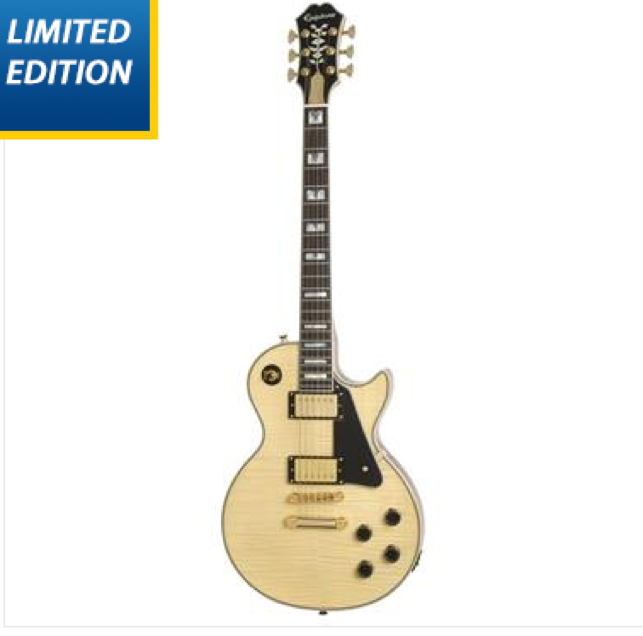
Epiphone limited edition £600 (Top end Epiphone)
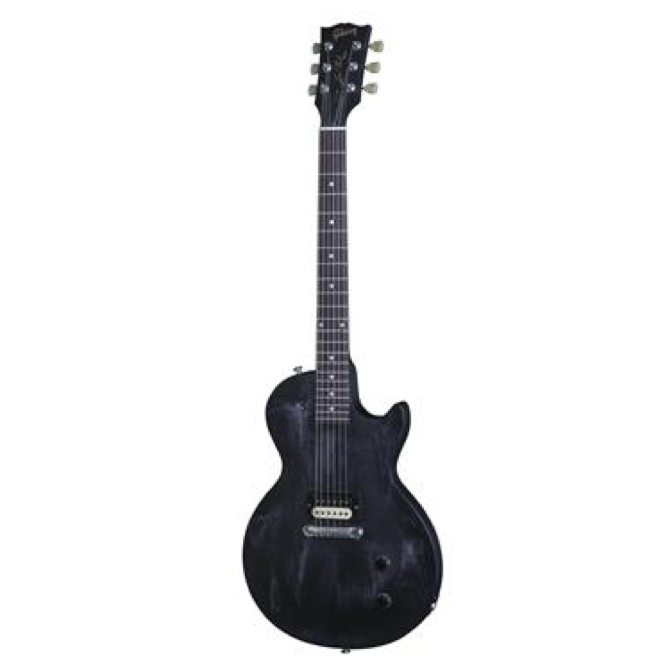
Gibson Les Paul CM Traditional Spec in Satin Ebony £570 (Bottom end Gibson)

Epiphone Les Paul Express in Vintage Sunburst £99 (Bottom end Epiphone)

Fender Custom Shop Heavy Relic Mischief Maker in Daphne Blue £3200 (High end Fender)
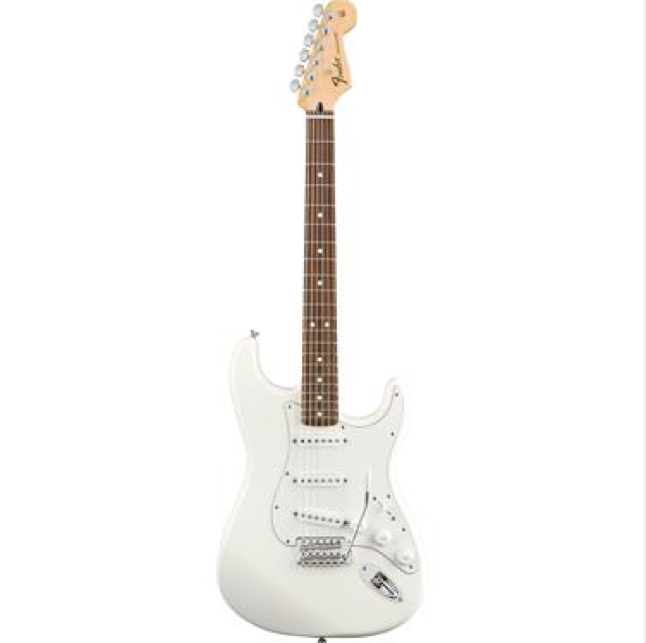
Fender Standard Strat Arctic White Mexican made £440 (Mid range Fender)
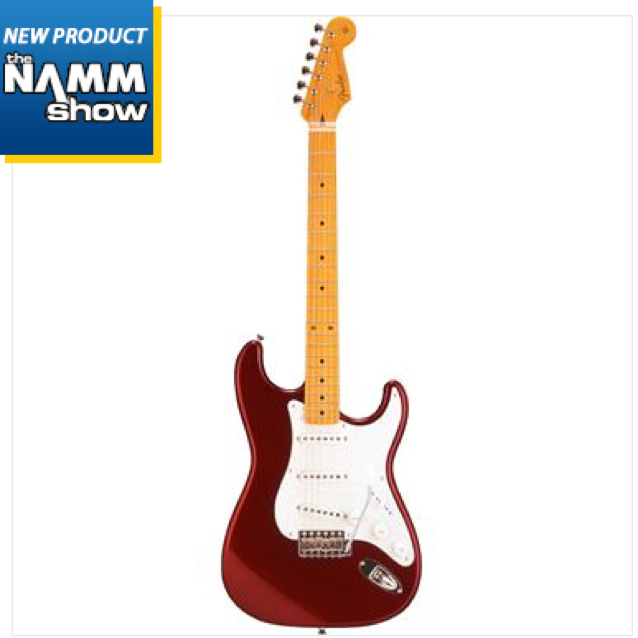
Fender Texas Special Classic 50's Strat. Japanese made £730 (mid range Fender)
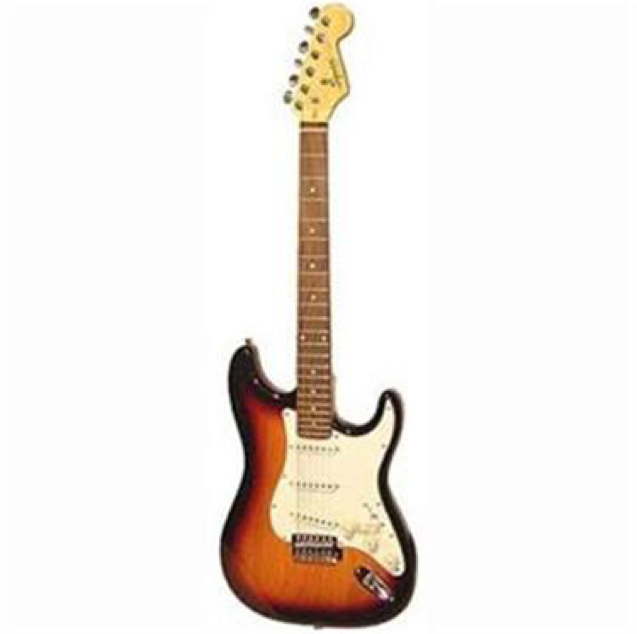
Squier Affinity Strat Sunburst Chinese made £150 (Low end Squire range Fender)
Conclusion.
It has to be acknowledged that the scope of this topic is vast, and can be affected by many factors and that the final outcome would be subjective depending on what kind of guitar a player finds desirable. My conclusion is as follows, based on my research and on many years experience of playing the guitars in question I would still argue that the Fender Stratocaster is the best all round mass produced guitar for the following reasons:
The Fender Stratocaster is an extremely versatile instrument with interchangeable necks and body’s, it offers a massive range of pickup configurations even as standard before the player even thinks about swapping out the pickups for aftermarket or custom parts. The guitars when bought new start at a very low and affordable price for a guitar that will sound reasonable stay in tune well and have a reasonable life expectancy. It is a fact that on the second hand market you can still find a Chinese 1990’s squire Stratocaster for sale for as little as £30 that will still be fully functional and the player need do nothing more than change the strings and plug it in so longevity is not a issue even with the cheapest made Fenders. High end Fenders like Gibson’s appreciate in value and in some cases are worth far far more than anyone ever imagined a guitar could ever be worth but that is due to a combination of rarity, quality and simply the legend. At this point I would like to state my research did not show the Stratocaster to be a better guitar than the Les Paul in terms of quality as in fact I would suggest the Les Paul is in fact the superior instrument due to it’s threw neck design and superior woods and it even has a far nicer finish to look at. The modern Les Paul has far more technology in it than the Fender with the Gibson auto tuners that can tune the guitar to any tuning instantly at the push of a button. The Stratocaster is the best all round mass produced guitar because it has a greater range of sounds as standard due to the different pickup configurations you can get a Les Paul sound from it if you get one with Humbucker pickups. Should it be damaged you can easily replace the necks yourself as depending on year it has just 3 or 4 screws holding the neck on unlike the Les Paul that is notorious for broken necks that require a skilled luthier to repair. It must be noted in all my years I have only seen one broken Fender neck against many broken Gibson necks. One of the main deciding factors for me is the entry level guitars in my experience the quality of a Fender squire against a entry level Epiphone Les Paul is superior as the very low end Epiphones are not known for staying in tune where as a Fender squire is and without any modification like locking nuts or tuner upgrades.
Lastly is the Partsocastor, a Stratocaster made up of parts either from other guitars or from third party after market parts. It is not uncommon to come across a Mexican made Stratocaster for example that has been seriously upgraded by possibly swapping out the Mexican pickups for American made Fender pickups or some Seymore Duncans. Off course people do customize their Les Pauls in similar ways but the options are less due to the fixed neck.
My research for me led me to the conclusion that the Fender Stratocaster is and probably always will be the best value, most reliable, most customizable, most versatile guitar ever built for mass production.
Feel free to disagree guys as every player is different.
Gym
Yep! You covered it! Nice post.